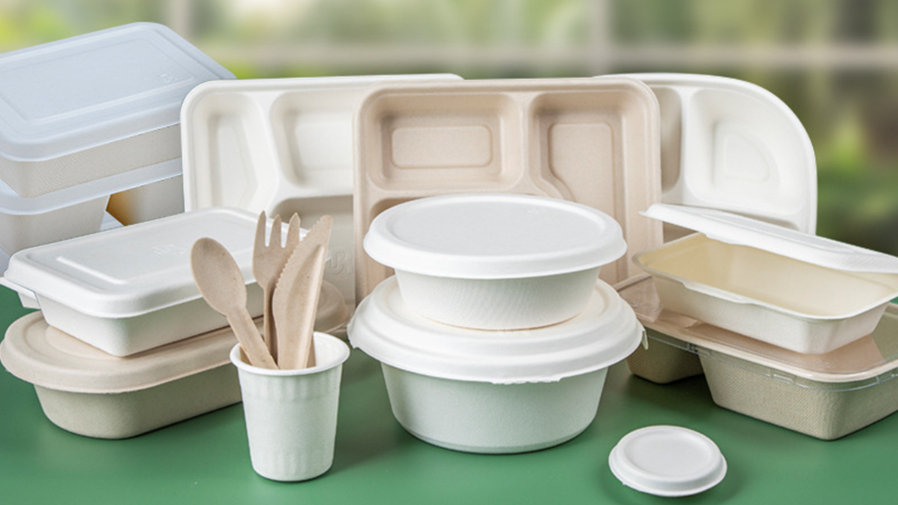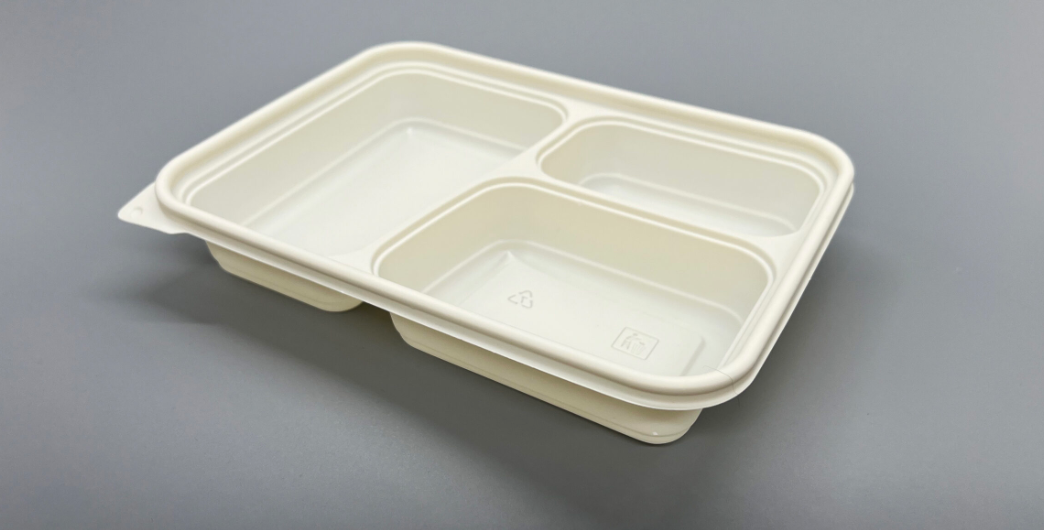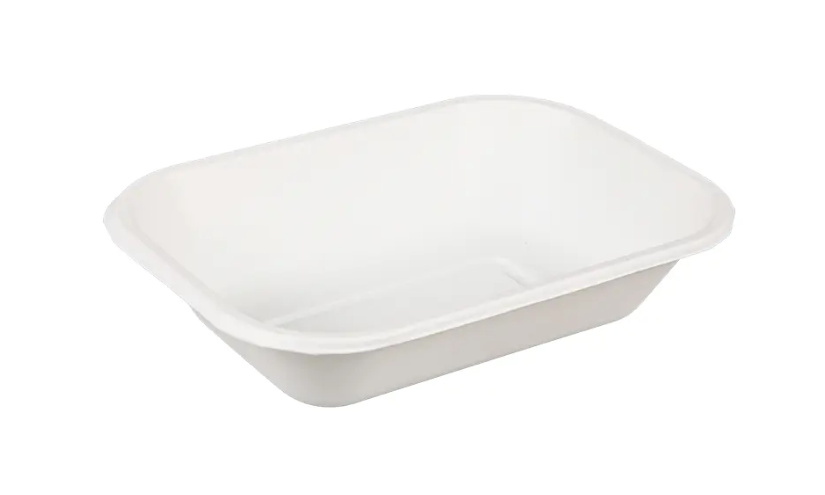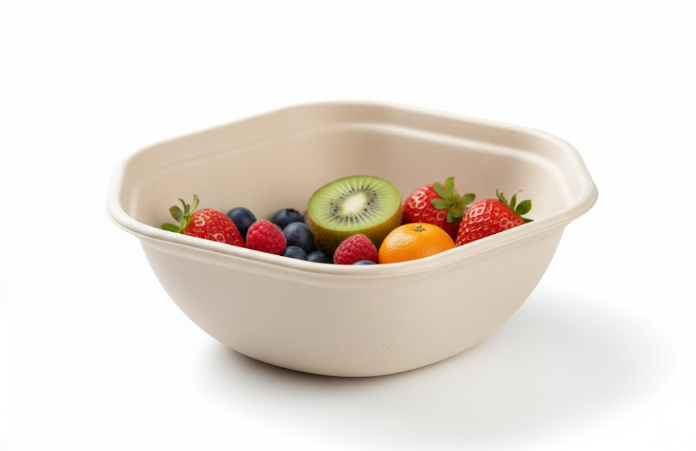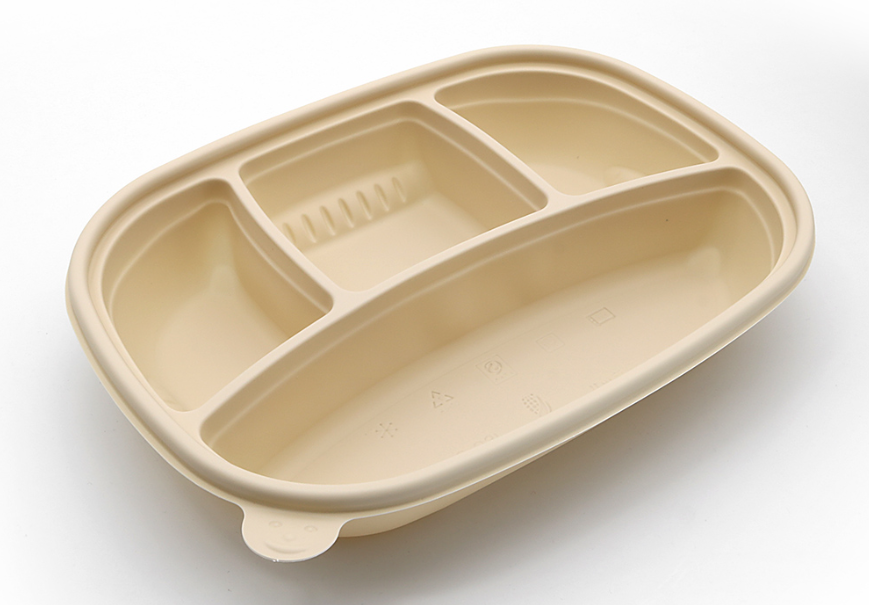The manufacturing of cornstarch food containers represents a sophisticated integration of agricultural processing, biotechnology, and advanced manufacturing techniques that transform renewable corn resources into biodegradable packaging solutions. Cornstarch tableware is made by extracting starch from corn, blending it with natural binders or biodegradable polymers, then molding it under heat and pressure into utensils and containers. This comprehensive production process encompasses multiple stages from raw material extraction through final product packaging, creating sustainable alternatives to traditional plastic containers.
Raw Material Extraction: From Corn to Starch
The cornstarch food container manufacturing process begins with comprehensive corn processing that separates valuable starch components from other kernel constituents through sophisticated wet milling operations. The process begins with the cultivation of corn. Corn is a versatile and widely grown crop that serves as the primary source of cornstarch. Farmers cultivate corn in large fields, and the crop is harvested once it reaches maturity.
Initial processing includes comprehensive cleaning and preparation procedures that ensure optimal starch extraction while maintaining quality standards essential for food contact applications. This is the first stage of the process and is done to free the corn of all kinds of impurities. After cleaning, the corn is soaked in water so that it doubles in size. Now the gluten bond weakens and the starch is thus released.
The wet milling process represents the core of starch extraction technology through sophisticated mechanical and chemical operations. After harvesting, the corn kernels are separated from the cob and then subjected to a milling process. Milling involves grinding the corn kernels into a fine powder to extract the starch. This starch is the key raw material for the production of cornstarch-based packaging.
Starch purification encompasses comprehensive separation techniques that isolate pure starch from other kernel components including proteins, fibers, and oils. The milled corn undergoes a separation process to extract the starch. Typically, this involves washing the milled corn with water to separate the starch from other components, such as proteins and fibers. Advanced hydrocyclone technology enables efficient separation while minimizing water consumption and maximizing starch purity essential for high-quality container production.
Quality control during starch extraction ensures consistent material properties and purity levels that support reliable downstream processing and final product performance characteristics. Washing with fresh clean water refines the crude starch milk. With hydrocyclones it is feasible to reduce fibre and solubles including soluble protein to low levels with a minimum of fresh water. The refined starch milk contains an almost 100% pure starch slurred in pure water.
Biopolymer Production: Converting Starch to PLA
The transformation of cornstarch into food container materials requires sophisticated biotechnology processes that convert starch into polylactic acid (PLA), the primary building block of biodegradable containers. The basic steps to create polylactic acid from corn are as follows: 1. First corn starch must be converted into sugar through a mechanical process called wet milling. Wet milling separates the starch from the kernels. Acid or enzymes are added once these components are separated. Then, they’re heated to convert the starch into dextrose (aka sugar).
Fermentation technology represents the critical biotechnology phase where corn sugars are converted into lactic acid through controlled microbial processes. Fermentation: The starches undergo a controlled fermentation process, similar to yogurt production. This step utilizes microorganisms to convert the complex starches into simpler sugars. Next, the dextrose is fermented. One of the most common fermentation methods involves adding Lactobacillus bacteria to the dextrose.
Polymerization processes transform lactic acid monomers into long-chain PLA polymers through sophisticated chemical reactions. Polymerization: The resulting sugars are then transformed into polylactic acid (PLA) through a polymerization process. PLA essentially functions as the building block for the bioplastic. Advanced polymerization techniques including ring-opening polymerization and direct polycondensation enable production of PLA with specific molecular weights and performance characteristics optimized for container applications.
Ring-opening polymerization represents the preferred industrial method for high-performance PLA production through sophisticated chemical processes. Direct Polycondensation: In this approach, lactic acid monomers are joined together under heat and vacuum. Water formed during the reaction is continuously removed to push the reaction forward. While simpler, this method often produces PLA with lower molecular weight unless optimized further. Each method has its trade-offs: ROP delivers higher performance plastic, while polycondensation is more straightforward but may require additives or blending for certain applications.
Post-processing optimization includes crystallization treatments and property enhancement techniques that improve PLA performance characteristics for demanding food container applications. Once PLA is polymerized, it goes through post-processing to fine-tune its performance. One key step is crystallization. By carefully heating and cooling the material, manufacturers can increase its rigidity and improve heat resistance, making it more suitable for applications like food containers or hot beverage cups. After polymerization, PLA is cooled and cut into small pellets
Pellet Formation and Material Preparation
The transformation of liquid PLA into solid pellets represents a critical manufacturing stage that enables efficient handling, storage, and downstream processing into finished containers. Pellet formation: The PLA undergoes a gentle heating process, followed by molding into uniform pellets. These pellets serve as the fundamental raw material for injection molding and thermoforming operations that create finished container products.
Material drying represents an essential preparation step that removes moisture content that could compromise processing quality and final product performance. PLA is a hygroscopic thermoplastic that readily absorbs water from the atmosphere. The presence of even small amounts of moisture will hydrolyze PLA in the melt phase, reducing molecular weight and causing loss of properties. Prior to injection molding, we recommend that all PLA containing compounds be dried to a moisture content below 0.02% (200 ppm) using a desiccant dryer with the capability of delivering air with a dew point of -40°F (-40°C).
Quality control during pellet production ensures consistent size distribution, density characteristics, and material properties that support reliable processing performance. Material Drying: PLA is hygroscopic and must be dried to a moisture content below 0.02% (200 ppm) using a desiccant dryer with a dew point of -40°F (-40°C). Drying temperatures are carefully controlled, typically not exceeding 130°F (55°C) for amorphous pellets, to prevent material degradation and ensure optimal performance during molding.
Additive integration includes incorporation of nucleating agents, colorants, and performance enhancers that optimize PLA properties for specific container applications. Colorants and slip agents can be added as a masterbatch at 15 – 30 wt% in PLA. Advanced additive systems enable customization of material properties including thermal resistance, clarity, and barrier characteristics essential for diverse food packaging requirements.
Container Manufacturing: Injection Molding and Thermoforming
The transformation of PLA pellets into finished food containers utilizes sophisticated manufacturing technologies including injection molding and thermoforming that create precise container geometries with consistent quality characteristics. The cornstarch-based biopolymer is then processed through extrusion or molding machines to form the desired packaging shape. In the case of films or coatings, the biopolymer can be extruded into thin sheets. For containers or other three-dimensional shapes, molding processes such as injection molding or thermoforming may be employed.
Injection molding represents the primary manufacturing method for complex container geometries requiring precision dimensional control and high-volume production efficiency. It involves melting the PLA resin and injecting it into a mold, where it cools and solidifies to form the desired shape. Injection molding is suitable for producing complex shapes and high-volume production. Advanced injection molding equipment enables precise control over temperature, pressure, and cooling parameters essential for consistent product quality.
Critical Processing Parameters for PLA Container Manufacturing:
-
Material Drying: Moisture content below 0.02% (200 ppm) using desiccant dryers with -40°F dew point capability
-
Mold Temperature Control: Amorphous morphology below 75°F (24°C) for applications under 120°F; crystalline morphology above 180°F (82°C) for higher temperature applications
-
Injection Pressure: Optimal pressures ranging from 8,000-15,000 psi (55-100 MPa) tailored to specific PLA grades
-
Cooling and Ejection: Controlled cooling cycles of 40-60 seconds depending on container wall thickness and complexity
-
Quality Monitoring: Real-time process monitoring ensuring consistent dimensional accuracy and material properties
Temperature control represents a critical aspect of PLA processing that determines final container morphology and performance characteristics. If application will not be exposed to temperatures above 120°F (50°C), it is acceptable to mold PLA in the amorphous morphology. Amorphous morphology is achieved by not adding any nucleating agents and using a mold surface temperature that is controlled to a temperature of less than 75°F (24°C). Mold temperatures higher than this will cause parts to stick in the mold and be very soft and flexible upon ejection.
Crystalline morphology optimization enables production of containers with enhanced thermal resistance for hot food applications. If application will be exposed to temperatures above the Tg of 130°F (55°C) regardless of pressure, or will be exposed to above 120°F (50°C) while under moderate pressure, ie 50 psi (340 KPa), RTP Company recommends that the PLA be in the crystalline state. Crystalline morphology is achieved by adding a nucleating agent (RTP Company offers either a standard cycle or a fast cycle nucleating agent). The mold surface temperature must be controlled at a temperature above 180°F (82°C), preferably about 220°F (105°C), and mold closed time must typically exceed 60 seconds for standard
Cooling and solidification processes ensure proper molecular structure development while maintaining dimensional accuracy and surface quality. Cooling and Solidification: Once the packaging shape is formed, it goes through a cooling and solidification process. This step is crucial for ensuring the stability and integrity of the final product. Advanced cooling systems provide uniform temperature distribution that prevents warping while optimizing cycle times for production efficiency.
Quality Control and Testing Protocols
Comprehensive quality control systems ensure cornstarch containers meet demanding food safety standards, performance requirements, and biodegradability characteristics throughout manufacturing operations. Every batch of cornstarch tableware undergoes strict quality control checks to meet safety and durability standards. Advanced testing protocols validate container performance across multiple parameters including structural integrity, thermal resistance, and environmental compatibility.
Food safety validation encompasses comprehensive testing for chemical migration, toxicity, and FDA compliance that ensures containers are safe for direct food contact applications. Food Safety: Ensuring the tableware is non-toxic and safe for use with all types of food. Strength and Durability: Assessing the ability to hold hot and cold foods without breaking or deforming. Biodegradability: Verifying the compostability of the final product under industrial or home composting conditions.
Performance testing includes comprehensive evaluation of mechanical properties, thermal resistance, and barrier characteristics that validate container suitability for diverse food service applications. Quality Control: Throughout the entire production process, quality control measures are implemented to ensure that the cornstarch packaging meets industry standards and specifications. This includes testing for factors such as strength, flexibility, and biodegradability.
Biodegradability verification represents a critical quality assurance component that validates environmental claims through standardized testing protocols. Unlike plastics, which contribute to non-biodegradable landfill waste, cornstarch tableware decomposes fully in 90–180 days under industrial composting conditions. Advanced composting studies ensure products meet international standards including BPI, ASTM, and European composting certifications.
Traceability systems enable comprehensive tracking of materials and processes throughout manufacturing operations, supporting quality investigation and continuous improvement initiatives. These systems provide documentation supporting regulatory compliance while enabling rapid identification and correction of quality issues that could affect product safety or performance.
Packaging and Distribution
Final packaging operations utilize environmentally responsible materials and processes that align with the sustainability objectives of cornstarch container production. Once the products pass quality control, they are packaged using eco-friendly materials and distributed to retailers or directly to consumers. Manufacturers often use recyclable or biodegradable packaging to align with their eco-conscious mission.
Distribution systems encompass comprehensive logistics coordination that maintains product integrity while optimizing delivery efficiency to diverse customer locations. Packaging and Distribution: The finished corn starch food container is then packaged and prepared for distribution. Companies may choose to sell the packaging material directly to manufacturers or incorporate it into their packaging solutions for various products.
Market preparation includes comprehensive customer education and technical support that enables successful implementation of cornstarch containers across diverse food service applications. Educational resources address proper usage guidelines, disposal recommendations, and performance optimization that maximize customer satisfaction while supporting environmental objectives.
Environmental Benefits and Sustainability Advantages
The cornstarch container manufacturing process delivers significant environmental advantages compared to traditional plastic production through renewable resource utilization and reduced energy consumption. Compared to traditional plastic production, the cornstarch tableware manufacturing process uses significantly less energy. A 2022 study published in Environmental Science Advances showed that PLA production requires up to 65% less energy than petroleum-based plastics. The carbon footprint of cornstarch tableware is considerably lower, as the production process captures CO2 through corn cultivation, offsetting a portion of emissions.
Lifecycle advantages encompass comprehensive environmental benefits from renewable feedstock utilization through complete biodegradability that supports circular economy principles. For starters, at the beginning of this package’s lifecycle, it is derived from renewable resources, unlike petroleum-based plastic. And in the processing and manufacturing phase of its lifecycle, cornstarch plastic emits fewer greenhouse gasses than traditional plastic. Once this eco-packaging reaches the consumer, it is used like any other product before moving into the end phase of its lifecycle, disposal.
End-of-life environmental benefits include complete biodegradability under industrial composting conditions that eliminate persistent waste accumulation. End-of-life: This is where cornstarch truly shines. Ideally, used containers enter industrial composting facilities. Here, controlled heat and moisture create optimal conditions for microorganisms to break down the PLA into its natural components in just 180 days.
Challenges and Future Developments
Manufacturing challenges include cost competitiveness compared to traditional plastics and infrastructure requirements for optimal biodegradation. Producing PLA is currently more expensive than traditional plastics, making cornstarch tableware less accessible in price-sensitive markets. The decomposition of cornstarch products often requires industrial composting facilities, which are not yet widely available in many regions.
Technological advancement continues driving improvements in processing efficiency, material performance, and cost competitiveness that support broader market adoption. The world of PLA plastic is evolving fast, and it’s exciting to see how manufacturers are pushing boundaries. Recent advancements have boosted fermentation efficiency, making the process faster and less energy-intensive. Instead of relying solely on crops like corn, companies are now exploring alternative feedstocks, such as agricultural waste, to reduce environmental strain. Emerging technologies, like enzymatic recycling, are game-changers, allowing PLA to be broken down and reused in a true circular economy. Industry trends show a clear focus on scaling PLA for mass production, with next-gen bioplastics gaining traction. These sustainable innovations are making PLA cheaper and greener, paving the way for wider adoption.
Conclusion: Advanced Manufacturing for Sustainable Packaging
The manufacturing of cornstarch food containers represents a sophisticated integration of biotechnology, advanced manufacturing, and environmental stewardship that creates sustainable alternatives to traditional plastic packaging. The manufacturing process of cornstarch tableware reflects its commitment to sustainability, from sourcing renewable materials to creating biodegradable products. While challenges remain, advancements in technology and infrastructure are paving the way for a greener future. By supporting cornstarch tableware, we not only reduce our reliance on plastics but also contribute to a cleaner, healthier planet.
The comprehensive production process encompasses multiple sophisticated stages from agricultural raw material processing through advanced polymer science and precision manufacturing that create high-performance biodegradable containers. Success in cornstarch container manufacturing requires expertise in biotechnology, process engineering, and quality management that ensures products meet demanding food safety standards while delivering authentic environmental benefits.
Future opportunities include continued technological advancement, cost optimization, and infrastructure development that will expand market adoption while supporting global transition toward sustainable packaging solutions that benefit businesses, consumers, and environmental protection objectives essential for long-term sustainability.

